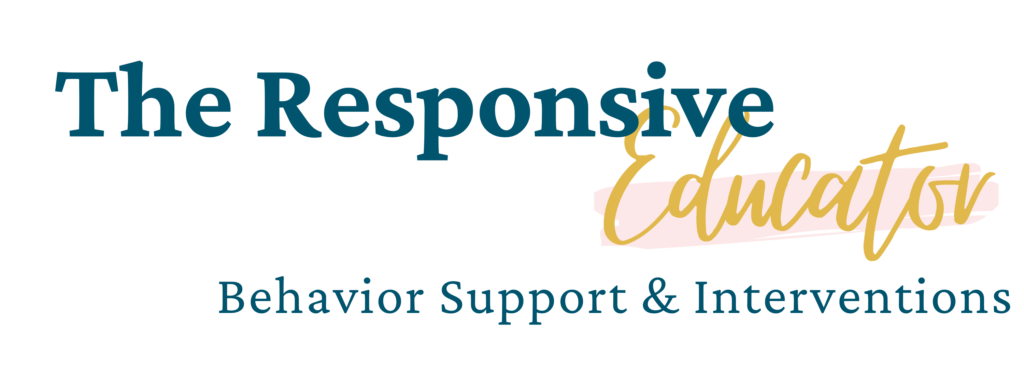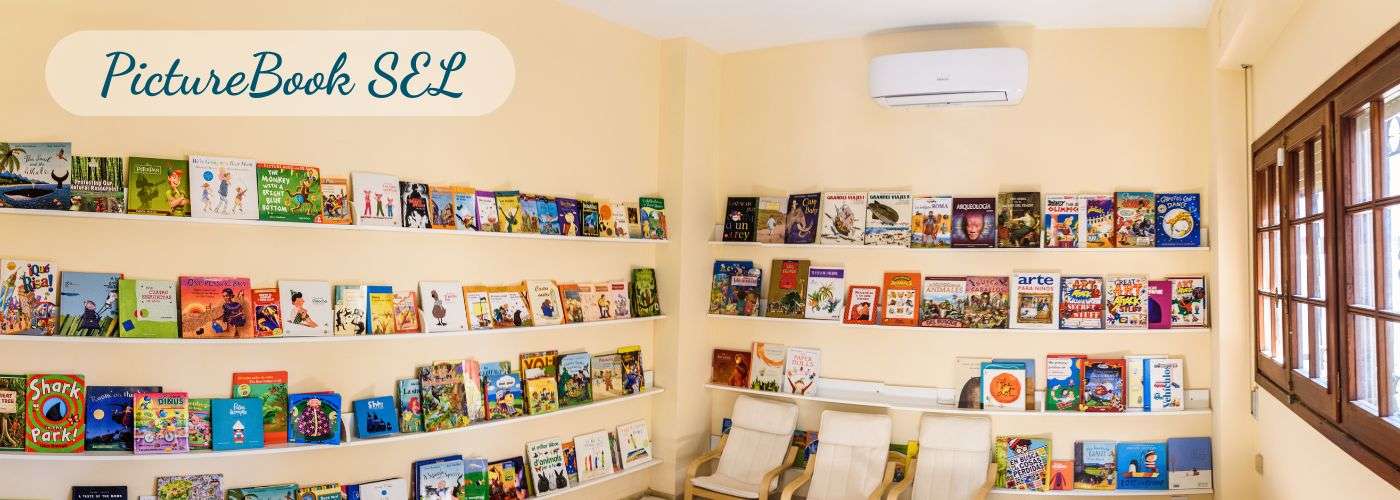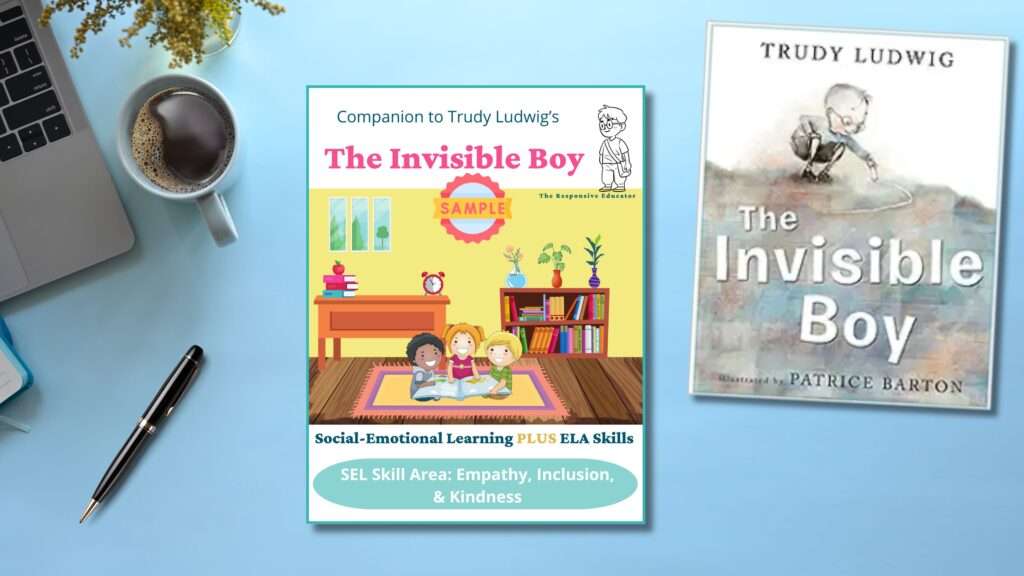


Teaching kids to take ownership of their actions isn’t always easy—but stories can help. Responsibility picture books offer children a safe, relatable way to explore what it means to follow through, care for their things, and think beyond “what’s in it for me?” Whether it’s remembering to turn in homework, cleaning up after playtime, or learning from mistakes, these picture books gently guide children toward becoming more accountable, independent, and thoughtful individuals. Below are some top picks that make the concept of responsibility both accessible and meaningful for young readers.
For some of these books, I have created interactive read-alouds to enrich their use in the classroom. These interactive read-alouds include discussion questions, activities, and prompts that engage students and deepen their understanding of the book’s themes. More interactive read-alouds are on the way. If there are specific books for which you would like to see a read-aloud created, please contact me using the form at the bottom of the page.
To learn more about supporting social-emotional learning and using interactive read-alouds in the classroom, check out these posts:
(As an Amazon affiliate, I earn a small commission if you purchase products through the links on my posts. Thank you for your support!)
Summary: In Arthur’s Pet Business, beloved aardvark Arthur is on a mission to prove he’s ready for a dog of his own. After his little sister D.W. lets slip that he’s been wanting a pet, Arthur’s parents challenge him to show responsibility first. Determined, Arthur launches a pet-sitting business that quickly becomes more than he bargained for—frogs, an ant farm, and even a boa constrictor make their way into his care! But with persistence, teamwork, and a few mishaps along the way, Arthur proves he might just be ready for a pup after all.
Description: Marc Brown delivers more than a cute tale here—Arthur’s Pet Business is an engaging and relatable look at what it means to take responsibility, especially when it comes to caring for animals. The story is rich with social-emotional learning opportunities, particularly around goal-setting, perseverance, and problem-solving. Arthur’s entrepreneurial adventure also introduces basic economic concepts like goods and services, making this a strong cross-curricular pick for early learners.
Classroom or home read-alouds can spark thoughtful conversations:
What does it mean to be responsible?
How can we show others we’re ready for more responsibility?
What do pets really need to be happy and healthy?
It’s also a helpful springboard for writing activities—students can design their own pet-care flyers or journal about a pet they wish they had and how they would care for it.
Reviews and Considerations: Parents and teachers consistently praise this book for its fun storytelling and rich illustrations. Young readers love the chaos Arthur navigates, and teachers find it useful for prompting meaningful conversations.
A common note from families: kids may start asking for a pet! Use this moment to reinforce discussions around daily care and responsibility.

Summary: Meet Noodle—a kid who always has an excuse. Whether it’s his mom forgetting to remind him or his brother running late, nothing ever seems to be his fault. But when his habit of blaming others starts to backfire, Noodle begins to learn an important truth: taking responsibility isn’t just the right thing to do—it’s empowering.
Description: This standout title from Julia Cook’s Responsible Me! series tackles the all-too-familiar “blame game.” Through relatable scenarios and humorous narration, kids see themselves in Noodle’s struggles and his journey toward owning his actions. The story clearly models how shifting from excuses to accountability can turn everyday challenges into chances for growth.
Ideal for classroom guidance or home discussion, the book supports social-emotional learning, especially in areas of self-regulation, decision-making, and problem-solving. Educators and therapists appreciate the built-in tips at the end of the book, which offer actionable strategies for helping children practice responsibility in real life.
Reviews and Considerations: Teachers, parents, counselors, and even occupational therapists consistently praise this book for its clarity, relevance, and positive messaging. Many note its success with both early elementary and older students, including those with ADHD or executive function challenges.
While some readers find the book a bit long for preschool attention spans, many agree it’s well worth it for grades 1–4. Several educators suggest pausing to reflect during the story or splitting it over multiple readings.

Summary: Everything has a place, and everything has value. In Respect and Take Care of Things, young children learn what it means to care for their belongings, shared spaces, and the environment. With simple text and warm illustrations, the book gently encourages children to clean up after themselves, ask before borrowing, and treat items—and people—with care.
Description: This title from the Learning to Get Along series introduces core concepts like respect, responsibility, and stewardship in a way that’s easy for preschoolers and early elementary students to grasp. It goes beyond personal items, extending the idea of “taking care” to shared materials, classroom supplies, and even the Earth.
This book fits well into SEL-focused units, routines for organizing classroom spaces, or lessons on sustainability and care for the environment. The story uses clear, child-friendly language that makes abstract social skills tangible. At the back of the book, caregivers and educators will find discussion prompts, activity ideas, and vocabulary suggestions to reinforce the lesson.
Reviews and Considerations: Early childhood teachers and parents repeatedly call this series a go-to for building character and social development. Educators appreciate how the concepts are broken down from the child’s perspective and reinforced with consistent visual cues. Many report that children begin to quote lines from the book in real-life moments, making it a powerful tool for internalizing routines and respectful behavior.
Some readers note that digital versions may display in black-and-white, which can affect engagement, but the print versions are full-color and clear. Others suggest that while the book is ideal for preschool through first grade, it’s still helpful for older students, including those with autism or developmental delays, thanks to its clarity and simplicity.

Summary: Before the sun rises, while the rest of the world sleeps, a boy and his dog head out into the stillness of morning to deliver newspapers. In this quiet, dreamlike world, they share a sense of purpose, peace, and companionship. Dav Pilkey’s The Paperboy captures the rhythm of early responsibility and the comfort of routine with gentle prose and luminous illustrations.
Description: Far from his usual high-energy characters, Pilkey’s The Paperboy is a poetic tribute to quiet moments, responsibility, and the bond between a child and his dog. It subtly affirms themes of independence, reliability, and finding joy in solitude—lessons especially meaningful for introverted children or those navigating early responsibilities.
Educators often use this book during units on community helpers, routines, or character traits like dedication and pride in one’s work. It’s also a unique SEL resource for discussing mindfulness and peaceful moments, making it a thoughtful choice for morning meetings or bedtime reading. The book’s illustrations—glowing with pre-dawn light—enhance the meditative tone, while the sparse text allows children to reflect and observe.
Reviews and Considerations: Parents and teachers consistently praise the book’s quiet beauty and depth. Many adults find it nostalgic, recalling a time when kids delivered newspapers and independence was more common. Children are often fascinated by the idea of a peer doing such a grown-up job and are drawn to the strong visual storytelling.
A few readers noted that, in today’s context, the idea of a child out alone in the early morning might feel outdated. This can lead to helpful discussions around changing norms, safety, and how roles in the community evolve over time.

Summary: Rory is a young dinosaur who’s always saying, “In a minute!” Whether it’s getting dressed, tidying up, or coming to dinner—Rory just can’t seem to act when asked. But when his family decides to give him a taste of his own medicine, Rory discovers just how frustrating delays can be. A humorous twist teaches a timely lesson about listening and respecting others’ time.
Description: In a Minute, Mum is a lighthearted yet effective story for introducing young children to the idea of punctuality, time awareness, and cause-and-effect consequences. The repetitive structure and playful illustrations make it ideal for preschool and early primary readers, especially those who enjoy dinosaur characters.
The story also lends itself well to classroom conversations around routines and cooperation. Parents and teachers can use Rory’s experience to discuss how small delays can affect everyone—and how being prompt is a way to show respect. Helpful discussion prompts are included at the back of the book, making it a useful tool for reinforcing social-emotional learning in both home and school settings.
Reviews and Considerations: This lesser-known book is helpful for children who struggle with procrastination or need gentle nudging during daily transitions. Parents praise the story for being both relatable and engaging, especially for children ages 3–6 who are just beginning to grasp the concept of time. Young readers connect with Rory’s behavior and enjoy the humorous ending where roles are reversed. The dinosaur theme is especially appealing to toddlers and early readers, keeping even reluctant listeners engaged.

Summary: Drew’s pet dragon, Diggory Doo, is a lot of fun—until it’s time to take responsibility. Whether he’s blaming others for his mistakes, skipping chores, or sneaking cake, Diggory’s actions show he’s not quite ready to be trusted. With Drew’s guidance, however, Diggory learns that mistakes are okay if we learn from them—and that taking responsibility is part of growing up.
Description: In this engaging and accessible story, children learn the importance of personal responsibility through the antics of a lovable dragon. The book tackles everyday behaviors—forgetting chores, making excuses, and avoiding consequences—in a way that feels fun rather than preachy.
Told in rhyme and paired with expressive illustrations, Train Your Dragon to Be Responsible is especially effective for younger readers (ages 4–8) and works well for SEL lessons, character education, and at-home reinforcement. The clear “problem, solution, lesson” format makes it a helpful resource for counselors, teachers, and parents alike.
Bonus: It invites interactive extension activities—children can reflect on their own habits, draw their own dragons, and even think about what they would teach their dragon about being responsible.
Reviews and Considerations: The book is widely loved by families, educators, and therapists. Many note that the dragon makes the message more relatable and less intimidating, especially for children struggling with deflection or impulse control. Parents appreciate how it reinforces their own lessons at home, while school social workers and special educators often use it to spark meaningful conversations in small groups.

Summary: What happens if just one person breaks a rule—throws a soda can out the window, talks during storytime, or ignores the no-splashing sign at the pool? Maybe nothing… but what if everybody did that? Through a series of humorous, exaggerated scenarios, this engaging picture book invites children to consider the ripple effects of everyday choices and how small actions add up—for better or worse.
Description: With clever repetition and lively illustrations, What If Everybody Did That? introduces the concept of personal responsibility in a way young children can easily understand. Each scene features a seemingly minor infraction, followed by the thought-provoking question: “What if everybody did that?” The resulting illustrations show a world in chaotic disarray, helping kids visualize the consequences of careless behavior.
This book is a strong fit for teaching citizenship, rule-following, and community awareness in PreK–Grade 2. It aligns naturally with classroom norms and SEL discussions around respecting shared spaces and being mindful of others. The final page offers a heartwarming reversal, showing how positive behavior—like giving a hug—can also be contagious.
Reviews and Considerations: Teachers, parents, and counselors consistently use this title to spark meaningful conversations. Many classrooms adopt the book’s title question as a behavior cue (“What if everybody did that?”), helping children reflect before acting. It’s especially effective early in the school year or when reviewing classroom expectations.
While most readers appreciate the visual storytelling and open-ended prompts, some note the lack of written explanation for each scenario may require adult narration to clarify context—especially for younger readers or group settings. Note that the story focuses mostly on what not to do, so be ready to balance it with affirmations of positive behavior or what should be done instead.



Summary: A child says something unkind—“You can’t play with us,” “That picture’s ugly,” or “You look funny with glasses.” It might seem like just one comment, but what if everybody said things like that? In this thoughtful companion to What If Everybody Did That?, young readers explore how our words impact others and how choosing kindness can make the world a gentler, more welcoming place.
Description: With clear, repetitive phrasing and playful-yet-powerful illustrations, What If Everybody Said That? walks children through real-life social moments where unkind words—often spoken without thought—can have lasting consequences. The book uses exaggerated “what if” scenarios to help readers see how small comments, when multiplied, can lead to a world that’s less friendly, less fair, and less fun.
It’s ideal for early elementary SEL instruction and home use, particularly when discussing empathy, manners, or anti-bullying themes. It also serves as a springboard for class discussions about how words can hurt—or help The final scene flips the script, showing the positive impact of a kind word and ending on a hopeful note.
Reviews and Considerations: Parents, educators, and school counselors frequently use this book to build awareness of how everyday language choices shape social environments. Teachers often introduce the phrase “What if everybody said that?” as a gentle, reflective classroom prompt. Readers note that children find the situations relatable and respond with both understanding and curiosity.
However, some reviewers feel the book leans heavily on negative examples and would benefit from more consistent positive modeling throughout—not just at the end. Others suggest that adult readers should be prepared to extend the conversation, especially with younger or sensitive children, as the book’s illustrations depict social discomfort quite vividly.

Summary: Noodle is tired of being told what to do. From brushing his teeth to playing piano the “right” way, it all feels like too much. Why does every little task matter so much? With guidance from his mom, Noodle learns that doing the small things well prepares him for bigger challenges down the road—and that taking responsibility can actually feel good. By shifting his mindset from “Why should I?” to “I did it!”, Noodle begins to see how effort and attitude go hand-in-hand.
Description: What’s In It For Me? is a relatable, gently humorous story that addresses a question every child has asked—out loud or silently. Part of the Responsible Me! series, this book teaches self-motivation and responsibility through Noodle’s everyday experiences. With each frustration, he begins to discover that discipline and follow-through aren’t just things adults want—they’re skills that help him feel proud and capable.
This story supports social-emotional learning by connecting daily responsibilities to long-term success and positive self-worth. It’s especially useful in classrooms or homes where children are learning the value of effort, follow-through, and listening skills. The book also includes helpful adult-guided tips and activities for reinforcing these lessons.
Reviews and Considerations: Educators and parents consistently praise the Noodle series for its age-appropriate tone, humor, and clarity. Many say their students immediately connect with Noodle’s internal monologue and feel seen in his reluctance. Teachers often use this book to support classroom routines and growth mindset lessons.
Some adults note that this title works best for students who already have some grasp of responsibility and are ready to take the next step toward internal motivation—making it a great fit for grades 1–4.

Sign up now to receive a free sample of “The Invisible Boy” Interactive Read-Aloud Lesson Plan! This comprehensive resource includes engaging activities designed to help your students develop empathy and inclusion.
By signing up, you will also join our newsletter, where you’ll receive:
Join our community of educators dedicated to fostering social-emotional growth in the classroom!

( ) = Coming Soon
Body Safety & Personal Boundaries
(Bravery & Trying New Things)
(Conflict Resolution)
(Compromise / Cooperating)
Feelings & Emotional Awareness
(Kindness & Generosity)
(Mindfulness)
(Peer Influence)
(Perseverance)
(Positive Attitude)
(Sensory Processing)
(Separation Anxiety)
(Sharing)
(Speaking Politely)
(Teasing & Bullying)
(Trauma Recovery)
(Winning & Losing)